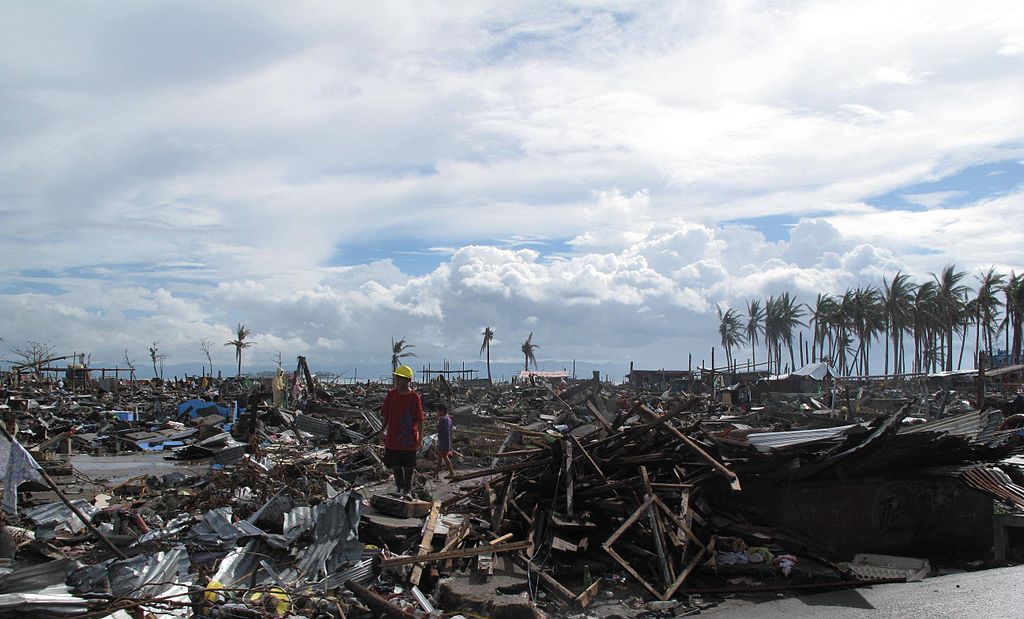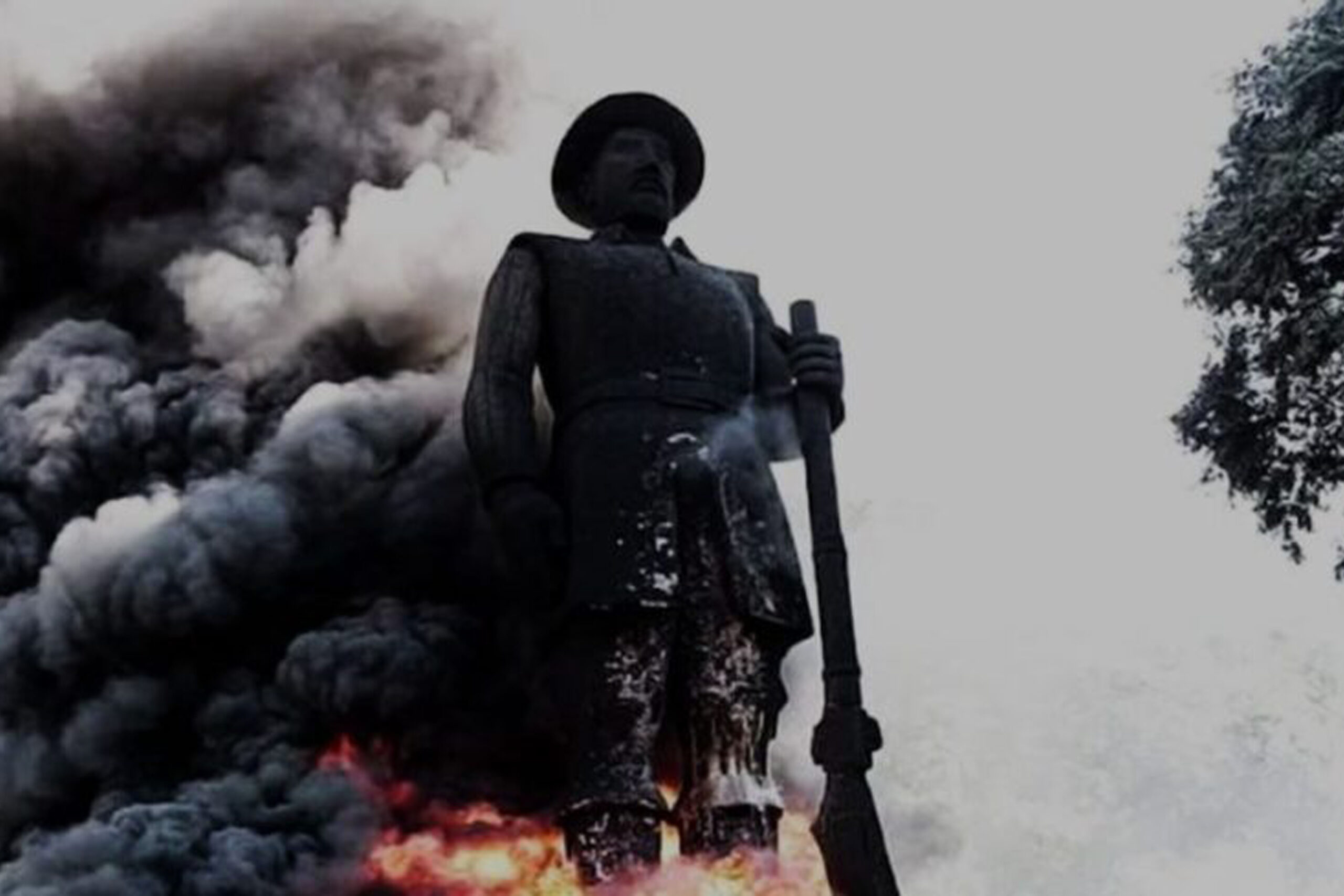Written by Ginbert Permejo Cuaton
Countries in the Global South face simultaneous problems of poverty, economic development, intensifying weather extremes, and the negative impact of climate change. Governments adopt disaster risk reduction (DRR) and climate adaptation policies that promise to solve these issues simultaneously to bring about sustainable development. Resettlement or planned relocation is one of the options, but how is such a policy choice justified and perceived by local governments? In this blog post, I answer this question by unpacking the justifications for resettlement in Tacloban, an urban coastal city in the Philippines, after Super Typhoon Haiyan struck in 2013, and discussing why it is significant to other cities in the Global South.

The 65th Annual Convention of the International Studies Association (ISA) was held last April 2-6, 2024 in San Francisco, California, USA. The conference’s theme centered on “Putting Relationality at the Centre of International Studies” and was attended by thousands of early career and senior scholars working on international development and internal studies in different countries from both the Global North and the Global South.
As an early career researcher from the Philippines, a country identified as the world’s most at-risk country from weather extremes and climate change, I presented in a panel on “The Contested Nature of Displacement, Resettlement and Forced Relocation in the Philippines”. Critically investigating this theme is timely as resettlement or planned relocation is one of the major national frameworks to reduce disaster risks and adapt to climate change impacts. Other co-presenters in my panel presented topics on “Gender, Disaster, and Vulnerability” (Genevieve Minville, York University); “Disaster Governance” (Emma Fingler, Queen’s University)”; and “Practices of Conviviality and Reparability among IDPs in Evacuation Camps (Romeo Joe Quintero, York University)”. Dr. Alistair Cook, Senior Fellow at the Centre for Non-Traditional Security Studies of Nanyang Technological University in Singapore, was our panel discussant.
I presented my paper, “From Emergency Response to Climate Adaptation Strategy: The Politics of Resettlement and its Impacts on Disaster Survivors’ Long-term Recovery and Resilience in an Urban Coastal City in the Philippines”, which is part of my PhD project at The Hong Kong University of Science and Technology.
Super Typhoon Haiyan in the Philippines
The Philippines sits at the frontline of weather extremes because of its exposure and vulnerability to various hazards, such as typhoons, which occur at least 20 times annually. The most damaging was Typhoon Haiyan (local name: Yolanda), a Category 5 super typhoon which took more than 6,300 lives and destroyed an estimated US$ 2 trillion in critical infrastructure in November 2013. Typhoon Haiyan brought about intense flooding, destructive winds, and fatal storm surges of 5-7 meters in height, making it one of the most destructive tropical cyclones in the country’s recent history. Typhoon Haiyan affected around 14.1 million people, of which 28% or an estimated 4.1 million individuals were displaced, resulting in severe disruptions to their lives, livelihoods, and wellbeing.

Resettlement as a climate adaptation and DRR strategy is not new. It has been applied in other countries after major disasters to mitigate future loss of lives and damage to properties, such as in the aftermath of the 2004 Indian Ocean Tsunami in Thailand, Sri Lanka, and India and the 2011 Great East Japan Earthquake and Tsunami. Resettlement policies have also been implemented to adapt to the adverse impact of global climate change, such as rising sea levels in Small Island Developing States (SIDS)
In the Philippines, the national government imposed the No Build Zone (NBZ) policy less than a month after Typhoon Haiyan. This directive prohibited the construction of residential dwellings within 40 metres of the eastern seaboard of Eastern Visayas, except for business, livelihood, and commercial purposes. Those affected were relocated to permanent resettlement villages as part of a long-term disaster risk reduction (DRR) and climate adaptation strategy. However, studies have found that post-Haiyan resettlement processes have been riddled with various issues, such as poor planning, a lack of involvement of affected communities, raffled strategies in housing allocation, duplication of beneficiaries, and bureaucratic delays.
Resettlement: Ten years after Typhoon Haiyan
It is more than a decade after the Haiyan disaster and the implementation of its various post-disaster recovery and rehabilitation programs. However, at least 15% of the target housing units for disaster survivors remain unfinished and are withering away. Moreover, our research supports other studies suggesting that significant vulnerabilities were (re)created, exacerbated, and/or emerged because of the off-site resettlement of displaced communities. These conditions are symptoms of the failure of adaptation interventions, also called maladaptation outcomes.
Yet, despite these resettlement-related issues, WHY do some local government units still prioritise and rationalise it as a policy choice for disaster risk reduction and climate adaptation? Guided by a political ecology framework, I tried answering this question by examining the multiple human factors (i.e. political, economic, social, and cultural) that impact resettlement. I propose the term “Logics of Survival” to describe the different discourses and rationalities negotiated and established across post-disaster governance processes, which justify and support resettlement as a logical course of action and policy choice for DRR and climate adaptation.
In my presentation, I identified three thematic “Logics of Survival” present in Tacloban City– an urban coastal city considered one of the ground zero or hardest hit areas of Typhoon Haiyan.

Prevent future losses/ damage from weather extremes and climate change (#1)
The Tacloban local government unit (LGU) claims that resettlement was the logical choice after Typhoon Haiyan and also in the future because of two reasons. First, Tacloban has limited surface land area. Tacloban North, where resettlement villages are located, is the only portion of the city elevated by at least 5m above sea level. With super typhoons are becoming the new normal and sea level rise is expected to increase because of climate change, relocating to Tacloban North was the logical choice to prevent future loss of life and damage to property. Tacloban is also projected to experience an increase in temperature and heavy daily rainfall, compounded by other hazards, including landslides, flooding, and storm surges.

Secondly, after Typhoon Haiyan, the city government dramatically changed its land zoning classifications. Under the previous plan, the majority of the areas affected by the storm surge were reclassified as hazardous for residential use and, therefore, limited for commercial use. Then, Tacloban North was reclassified from timber, forest, and agricultural zones into a mixture of residential, commercial, and industrial land uses. Government officials have explained that in-place relocation is not considered an option by the Tacloban LGU, and all future relocations will be offsite and in Tacloban North. Subsequent weather extremes after Typhoon Haiyan also reinforce this rationale, especially since Tacloban wants to break the chain of “repeated rebuilding after every storm”.
Defend resettlement as a policy choice (#2)
The early post-Haiyan resettlement processes were marred with policy confusion, institutional disharmony, and miscoordination between regional and national government agencies. The change in the governance regime also significantly affected the post-Haiyan resettlement. Under the Benigno Aquino III administration (2010-2016), the LGUs established Local Inter-Agency Committees composed of representatives from multiple levels of government departments and the private sector to work on sustainable relocation to permanent resettlement sites to Build Back Better. Unfortunately, the resettlement process was expedited by the next administration under the Rodrigo Duterte government (2016-2022). Duterte gave the National Housing Authority a marching order to complete and relocate the displaced households as soon as possible. The swift construction of houses led to several issues. This included insufficient land development, disregard for development permits and building licenses, and substandard work outcomes. It also resulted in homes being assigned to beneficiaries who were not verified, creating confusion and tensions between local and federal government organisations as well as potential beneficiaries.
The top-down approaches and policy impositions of the national government meant that the local government units were left to resolve conflicts and gaps. Interviewed government officials acknowledge that there have been problems with raffled housing, delayed construction of houses, multiple and duplicate housing beneficiaries, and lack of social services and infrastructure in resettlement villages. However, they argue that Tacloban must stand by the policy choices implemented or imposed by previous national government regimes (from the Aguino to the Duterte governments) and do their best to rectify or solve the gaps at the grassroots level.
With the current Bongbong Marcos Jr. government, local officials see a light at the end of the tunnel. Bongbong Marcos Jr. is the first cousin and close family relative to Tacloban’s Romualdez clan. The Leader of the House of Representatives, Martin Romauldez, is also Mayor Alfred Romualdez’s cousin and was a Haiyan survivor. Thus, in the Philippines, where patron clientelism and political dynasties are rampant and acknowledged as vital to survive and thrive in political offices, Tacloban City sees the Marcos Jr. Presidency as an “opportune time” to rally and maximise fiscal support and development programs for its post-Haiyan Recovery and Rehabilitation efforts.
Strengthen the survival and legitimacy of political elites in Tacloban (#3)
Hon. Alfred Romualdez has been Tacloban City’s Mayor since 2007. His wife, Cristina Romualdez, was Mayor for a brief period between 2019-2022 due to term limitations. Alfred is the current mayor of Tacloban. However, the 2022 Election cycle was considered a “turning point” for the Romualdez political clan because his son, Raymund Romualdez – his teammate as Vice Mayor in the ballot – lost to their political rival. Anonymised informants who served as political advisors of the Romualdez in the election speculated that voters from resettlement villages were the ultimate reason Raymund lost.
The post-Haiyan recovery and rehabilitation issues have been a contentious electoral narrative used by Romualdez’s opposition to generate votes and sympathy from voters, especially in resettlement villages. These issues include the failure of the LGU to address the absence or lack of affordable and accessible water supply, costly transportation, absence of sustainable livelihoods and income, lack of critical infrastructure and services for education and health, and delayed completion and turnover of housing units.
Tacloban North comprises ~40% of the city’s population and hosts 16,782 housing units for Typhoon Haiyan survivors, 96.12% of which have already been raffled to beneficiaries as of August 2022. Tacloban North is considered “a city within a city”. As the area’s population grows, Tacloban North is projected to be the “main electoral battleground” for the city’s political elites, especially the Romualdez political clan. An informant noted that beyond the short-term election results, Tacloban LGU must consider it as a lesson learned to “see the bigger picture”; that is, the issues and challenges of disaster survivors in Tacloban North continue to prevail and that the city government must revisit its priority programs for the long-term recovery and rehabilitation of displaced households in resettlement villages.
Understanding the local context and political dynamics governing resettlement is vital
There are various drivers of resettlement, including the role of power and politics in post-disaster governance and long-term recovery. In my paper, I look at resettlement beyond the discourse of disaster loss and damage by demonstrating that powerful actors and institutions have different rationales or justifications for governing resettlement in post-disaster recovery. As a DRR strategy and climate adaptation policy, resettlement can be contested and affected by overlapping social, economic, and political drivers, including local political realities. This demonstrates the importance of context in disaster management and governance, particularly when vulnerable communities are more negatively impacted in the long term by ineffective development programs and inadequate governance than by the actual hazard itself.
Ultimately, my findings contribute to understanding the sociality involved in disaster risk reduction and climate adaptation. Resettlement is more than just a techno-managerial intervention to minimise loss and damage. It involves various actors and institutions with overlapping relationships, interests, and justifications that shape resettlement processes and outcomes, including issues of justice and equity for affected communities. While my findings may reveal some parallels accross different Global South communities, there are some distinct peculiarities that can only be understood by an interdisciplinary and place-based investigation of its multiple drivers, including power and politics.

Ginbert’s biography
Ginbert Permejo CUATON examines social policy issues on disasters, displacements, and climate actions in Southeast Asia, specialising in the Philippines. His works have been cited in globally important policy documents like the Intergovernmental Panel on Climate Change (IPCC) 6th Assessment Report (2022) and the UNFAO’s Women and Men in Small-scale Fisheries and Aquaculture in Asia (2022). He is a final year PhD Candidate in Environmental Science, Policy and Management at The Hong Kong University of Science and Technology (HKUST), supervised by Dr. Masaru YARIME (HKUST) and Dr. Yvone SU (York University). He will serve as a Research Assistant Professor at the Department of Sociology and Social Policy at Lingnan University of Hong Kong starting August 2024.
Ginbert was a recipient of the Global South Colloquium Fund.
The views and opinions expressed on this blog post are solely those of the author.
Please note that the Hub operates under the Creative Commons Attribution-NonCommercial-NoDerivs 4.0 International license and our posts can be republished in print and online platforms without our permission being requested, as long as the piece is credited correctly.
To get the latest news from the Global Souths Hub follow us on X or LinkedIn or sign up to our monthly newsletter.



